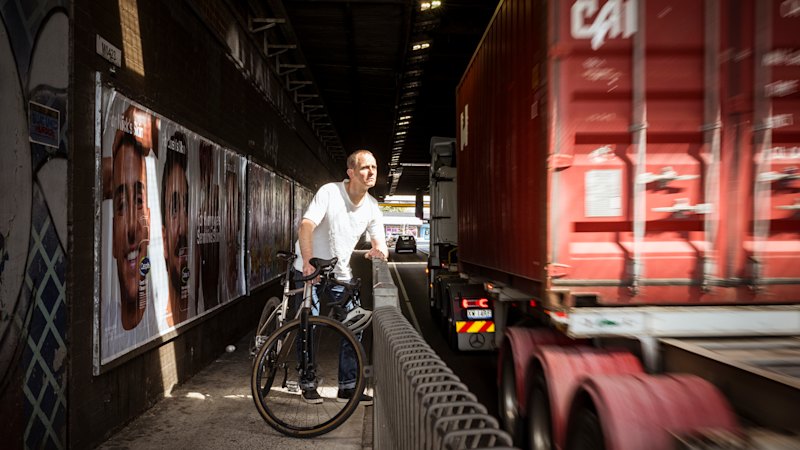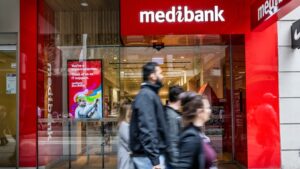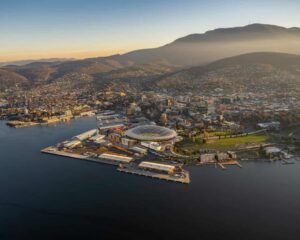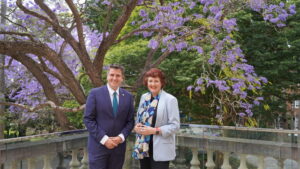
Plans for high-rise developments in Melbourne’s inner west have ignited debate among local residents, who are calling for urgent infrastructure improvements before new housing projects proceed. The Victorian government has identified Tottenham as a key area for growth, proposing apartments up to 12 storeys high, largely due to its transport links. Yet, local advocates argue that existing transport facilities, particularly the Ashley Street underpass, require significant upgrades to accommodate increased population density.
The only current access point across the railway tracks at Tottenham is a dimly lit underpass that often floods during heavy rain. John Symons, president of the cycling advocacy group BikeWest, emphasizes that simply adding thousands of homes near a train line is insufficient without addressing the transportation barriers inherent in the area. “The railway line is a massive barrier for movement north-south in that corridor,” Symons stated. “The Ashley Street tunnel needs to be upgraded before major housing growth.”
The Victorian government has earmarked up to 50 areas across Melbourne for increased housing density, including Middle Footscray, West Footscray, and Tottenham. Community sentiment is mixed. While some residents express support for higher-density housing, many remain skeptical due to the history of flawed urban redevelopment, particularly at the Joseph Road precinct. Concerns resurfaced recently following a coroner’s call for road safety improvements after a tragic incident in which a 22-year-old student was killed while crossing Hopkins Street in 2023.
The population of the City of Maribyrnong is projected to rise by 57 percent, reaching 155,000 by 2051. At a recent consultation event in West Footscray, attendees experienced the government’s vision for the area through virtual reality. Nevertheless, skepticism persisted. Resident Ming Kang Chen, 33, voiced concerns about potential shadowing from proposed 12-storey apartments on Barkly Street and criticized the government for not including plans for public housing, relying instead on market-driven developments. “They’re only being built for investors,” Chen remarked, referencing the Docklands area as an example of unlivable apartments.
In contrast, Sotheary Kong, 44, who emigrated from Cambodia two years ago, expressed support for the development plans, citing the high cost of living in Australia and the pressing need for housing. “We are short of houses,” she said.
The Age is intensifying its focus on the challenges and opportunities in Melbourne’s western suburbs with a special series. A summit hosted by the West of Melbourne Economic Development Alliance (WoMEDA) will address the future of the region, emphasizing the need for enhanced infrastructure and local employment opportunities alongside the proposed housing developments.
WoMEDA chair Peter Dawkins argues that the government’s plans for the inner west could lead to increased local employment, provided they are accompanied by necessary public amenities and upgrades to active transport options. “There’s a general question around how much emphasis has been given to employment-in-precinct policy,” he noted.
Government representatives assert that the Middle Footscray, West Footscray, and Tottenham activity centres will differ from previous flawed projects such as the Joseph Road precinct. “Labor introduced apartment design standards, and we’ve invested billions in the inner west,” a government spokeswoman said, highlighting initiatives such as the Metro Tunnel and West Gate Tunnel.
WoMEDA’s upcoming report on economic growth will emphasize the importance of job creation in the region. The new $1.5 billion Footscray Hospital and the existing Victoria University campus are expected to enhance educational and health-related employment opportunities. Dawkins also pointed out the potential for creative industry growth, with plans for a large performing arts venue and a cultural hub on the horizon.
The layout of the Tottenham activity centre is notably impacted by its large industrial precinct and the presence of a high-rise zone above the Central West shopping centre, both owned by ISPT, a property fund for industry superannuation. The proposed developments primarily extend north toward Braybrook, not south across the railway yard, which divides West Footscray.
Moving closer to the city, the Middle Footscray activity centre is designed differently, with a focus on smaller buildings and more greenery. Chris Gooden, president of the Seddon Village Traders Association, expressed concerns about the potential for overdevelopment in the area, advocating for a balanced approach that prioritizes livability. “We need to create neighborhoods, not ghettos with too much wind and darkness,” he stated.
As discussions continue on the future of the inner west, the Maribyrnong Council is set to vote on its official response to the government’s housing plans. Deputy Mayor Bernadette Thomas has highlighted the need for infrastructure improvements, particularly the upgrade of the Tottenham station and Ashley Street underpass, to enhance access to the proposed activity centre.
The West of Melbourne Summit, co-hosted by WoMEDA and the Age, is scheduled for October 22-23, aiming to foster dialogue on the economic and infrastructural needs of Melbourne’s western suburbs. For more information, visit womeda.com.au.







